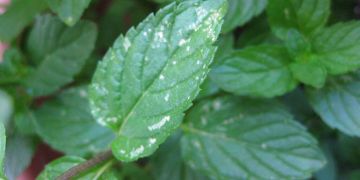Habitat
The spearmint plant is native to Europe, but it grows well in most temperate climates. Its common name is related to the pointed shape of its leaves that resemble a spear.
Active Ingredients
The main active ingredients in spearmint are Mint L-carvone and limonene. The leaves are the parts of the plant that are used for their essential oils that contain menthol and flavonoids.
Health Benefits
Spearmint is very closely related to peppermint with regard to its active ingredients and ways in which it is used for health benefits.
Medicinal uses of both mint preparations aid in digestion and to reduce flatulence. Spearmint is used for relief of nausea, cold symptoms, stomach distress, headaches and indigestion.
Spearmint oil and leaves are used in the preparation of medicines. Digestive disorders such as indigestion and diarrhea are sometimes relieved by spearmint, along other maladies that include irritable bowel syndrome and gall bladder problems. Use in relieving sore throats, toothaches and headaches is common, and some people find relief by using spearmint as a local pain killer or as an antispasmodic medication for cramps.
Excessive Hair Growth in Women
Experiments in modifying the amount of androgen levels in women who have an excessive amount of hair is reported by the USNLM at https://www.ncbi.nlm.nih.gov/pubmed/17310494. Researchers in Turkey conducted controlled experiments on 21 hirsute female patients by applying findings from previous tests on laboratory rats. The women drank Spearmint tea twice a day for five days as part of a specially designed program of treatment. The results showed that spearmint has potential as an alternative to other forms of antiandrogenic treatment when hirsutism is in a mild form. The report indicates that further testing is required to validate the results of the study prior to recommending spearmint as a drug to reduce the incidence of hirsutism (excessive hair growth in women).





